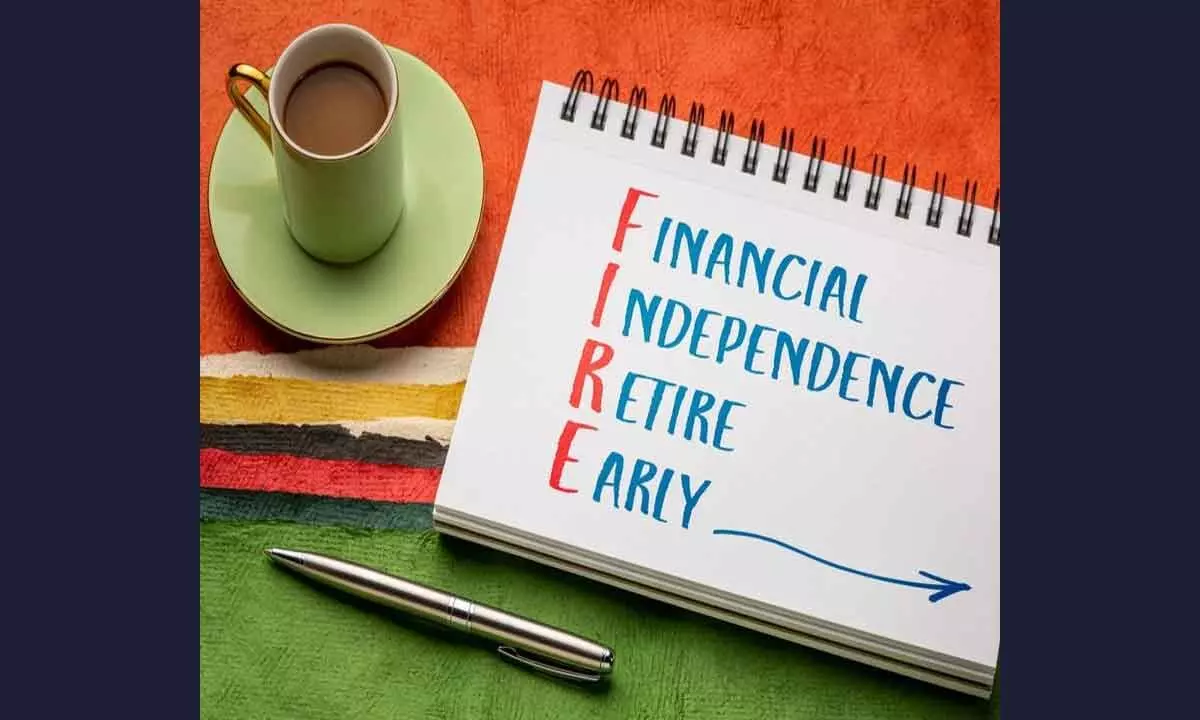Playing with FIRE
FIRE has taken a cult status with a many people devoted to a program of extreme savings and investments that aims to retire earlier than traditional timelines
image for illustrative purpose

So, is FIRE only for those high earners? The movement offers huge learning for every individual those who may not be in a hurry to retire. The first step begins with the detailed planning. While every financial plan envisages the various aspects of the individual’s goals, etc. the minute diligence taken to earmark each of the needs and expenses is quite exhaustive particularly provisioning for emergency funds, etc. and most importantly sticking to these plans is what it teaches
There is a trend mostly in the US and the west to amass a corpus and retire early, aka FIRE, Financial Independence Retire Early. This is not a new one but has taken raze in the last few years. FIRE has taken a cult status with a many people devoted to a program of extreme savings and investments that aims to retire earlier than traditional timelines. The post-pandemic asset appreciation also has allowed many aspirants or reaching their goals. The valuation increases across the assets like real estate, stocks, crypto has made many achieve the goal easily and early too.
Conventional FIRE adherents are not necessarily big earners or genius investors. The key lies in precision planning of their finances and combine with expert execution of their plans, which allowed even some minimum-wage earners to retire early. FIRE proponents behave highly frugal and are at times considered as extreme bargain hunters. The simple thumb rule is to calculate the target amount, ‘FI number’, by multiplying the possible annual retirement expenses by at least 25 and try eke out as much possible savings through tax-saving instruments of pensions, etc.
For the same earnings, if someone were to save more and spend less, the timelines is quicker than for those who spend more while saving less. So, those who could endure greater sacrifices, FIRE can be possible even in their 30’s. This is about halfway through the generally accepted retirement age of 65, in the west. By saving up to 70 per cent of their income and consuming only limited percentage of savings post-retirement, i.e., typically in the range of 3 per cent-4 per cent, FIRE followers plan to sustain their retirement life.
However, it’s not that these extreme measures have to be followed. With many millennials jumping on to this bandwagon, there are many variations that have come up within the FIRE community. Lean FIRE: These are almost in the minimalist living and devoted to stringent monitoring of their expenses. Fat FIRE: These are the individuals who wouldn’t want to compromise on their current standard of living or lifestyles during their retirement. But they would save substantially higher than their peers while employing aggressive investing strategies to achieve a larger corpus. Coast FIRE: These individuals approach in a much measured way with frontloading their retirement savings and ‘coast’ on the compounding of this corpus while working lightly till the desired amount is achieved. Then there’s Barista FIRE who quit their regular job but bolster with a side gig like a barista, to avail health insurance benefits, etc. The pandemic induced lockdowns not only created upheavals but opportunities for some others who could work from anywhere, making them to migrate to their hometowns, thus saving costs while some others taking up additional assignments to their regular jobs, moonlighting, etc. Some even began trading in stocks or crypto assets to generate income. This has enhanced not just reducing their costs but also added additional income. When they began to streamline their costs, while aggressively pursuing investing their additional savings timed well for the market’s bull run, the compounding turned exponential.
So, is FIRE only for those high earners? The movement offers huge learning for every individual those who may not be in a hurry to retire. The first step begins with the detailed planning. While every financial plan envisages the various aspects of the individual’s goals, etc. the minute diligence taken to earmark each of the needs and expenses is quite exhaustive particularly provisioning for emergency funds, etc. and most importantly sticking to these plans is what it teaches.
Another important aspect is the discipline it requires to pull off FIRE. A higher sense of management is needed especially in expenses. As Luke Burgis mentions, “After meeting our basic needs as creatures, we enter into the human universe of desire. And knowing what to want is much harder than knowing what to need.” This distinction is needed for everyone who wants to ensure a pleasant retirement. Also, consumption of the corpus is always within the stipulated band so that it addresses the greatest risk of retirement, living too long.
And possible the most critical aspect of FIRE is defining how would one want to spend their retirement, not talking about the finances but the social life, the loads of additional time. The pleasure of retirement shouldn’t become a longing for missed work, this is a common crib for many of those FIRE proponents. And even for those who have a clear path into the decades could become a slave to their idle minds.
(The author is a co-founder of “Wealocity”, a wealth management firm and could be reached at [email protected])

